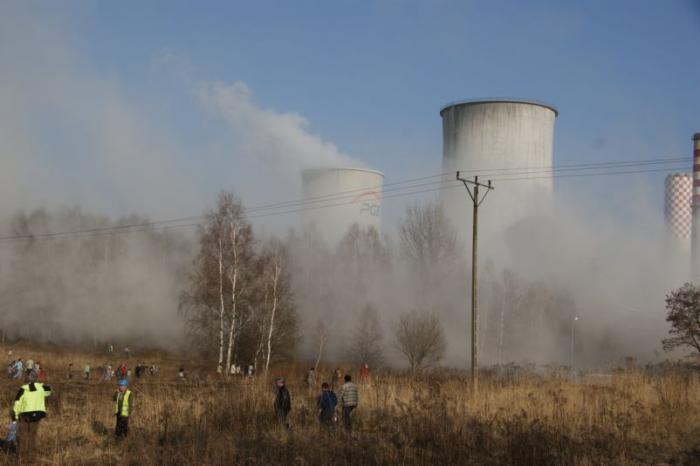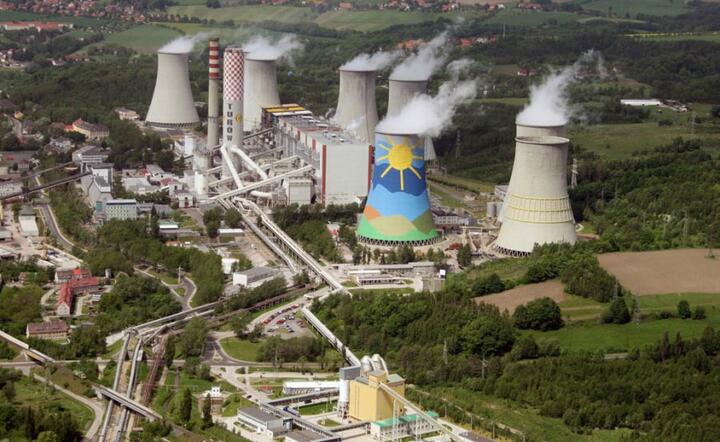PGE GiEK S.A. Oddział Elektrownia Bełchatów, or Bełchatów Power Station Branch of PGE GiEK S.A., is a very important power plant in Poland. It's one of the largest power plants in the world that burns lignite, which is a type of brown coal. Let's understand what that means.
What is PGE GiEK S.A.?
PGE GiEK S.A. stands for Polska Grupa Energetyczna Górnictwo i Energetyka Konwencjonalna Spółka Akcyjna. That’s a long name! Essentially, it's a company within the larger Polska Grupa Energetyczna (PGE) group. This specific branch focuses on mining and conventional energy generation. Conventional energy generation typically means using fossil fuels like coal to create electricity. Think of PGE GiEK S.A. as the arm of PGE that deals with coal-fired power plants and the mines that supply them.
PGE itself is one of the biggest energy companies in Poland. The company owns and operates many power plants and mines across the country. It plays a vital role in providing electricity to Polish homes and businesses.
What is Elektrownia Bełchatów?
Elektrownia Bełchatów is the power plant itself. It is located near the town of Bełchatów in central Poland. The power plant is massive, with multiple large generating units. These units are the individual power plants that burn coal to generate electricity. It has a huge impact on the Polish energy sector. The location was strategically chosen because of the large deposits of lignite found in the area.
Elektrownia Bełchatów is important because it generates a significant portion of Poland's electricity. For many years, it was the undisputed leader in electricity production in Poland. It remains a major player, though renewable energy sources are becoming more important.
What is Lignite?
Lignite, also known as brown coal, is a soft, brownish-black sedimentary rock formed from naturally compressed peat. It's a type of coal, but it's younger and has a lower energy content than other types of coal like bituminous coal or anthracite. Because it's younger, it contains more moisture and less carbon. Consequently, it produces less heat when burned compared to other types of coal. Burning lignite also tends to release more pollutants compared to higher-quality coal.
Because of its lower energy content, lignite is generally used in power plants located very close to the mines where it is extracted. This is because it's not economical to transport lignite over long distances. Elektrownia Bełchatów is built right next to a large lignite mine for this very reason. It minimizes transportation costs and losses associated with moisture content changes.
How does Elektrownia Bełchatów work?
The Elektrownia Bełchatów works like most other coal-fired power plants, but on a much larger scale. The process begins with lignite being extracted from the nearby mine. Huge excavators remove the overburden (the soil and rock above the lignite) and then dig out the lignite itself.
The lignite is then transported to the power plant, where it's burned in massive boilers. The heat from the burning lignite boils water, creating high-pressure steam. This high-pressure steam is then used to turn turbines. Turbines are like giant windmills inside a closed system.
As the turbines spin, they are connected to generators. Generators convert the mechanical energy of the spinning turbine into electrical energy. This electricity is then fed into the power grid and distributed to homes and businesses across Poland. After the steam passes through the turbines, it is cooled and condensed back into water, which is then reused in the process.
Environmental Impact
Elektrownia Bełchatów has a significant environmental impact. Burning lignite releases large amounts of carbon dioxide (CO2), a major greenhouse gas that contributes to climate change. It also releases other pollutants, such as sulfur dioxide (SO2) and nitrogen oxides (NOx), which can cause acid rain and respiratory problems. The mining operations themselves also have a significant impact on the landscape. Open-pit mining can destroy habitats, alter water tables, and create large areas of disturbed land.
Due to these environmental concerns, there are increasing pressures to reduce the use of lignite and transition to cleaner energy sources. PGE, the parent company of PGE GiEK S.A., is investing in renewable energy projects, such as wind farms and solar power plants, to diversify its energy mix and reduce its carbon footprint. The power plant is slowly introducing modernization to increase efficiency and reduce emissions.
The Future of Elektrownia Bełchatów
The future of Elektrownia Bełchatów is uncertain. The power plant is facing increasing pressure to reduce its emissions and transition to cleaner energy sources. Poland has committed to reducing its greenhouse gas emissions as part of its international agreements. This commitment means that Elektrownia Bełchatów will likely need to be either significantly upgraded to reduce its emissions or eventually decommissioned. One proposed solution involves repurposing the site for other energy generation methods.
The transition away from lignite will be a complex process, with social and economic implications. The Bełchatów region relies heavily on the power plant and mine for employment. A just transition will be needed to ensure that workers and communities are supported as the energy sector changes. Ultimately, the future of Elektrownia Bełchatów will depend on Poland's energy policy and its commitment to addressing climate change. It represents a crucial turning point in Poland's energy future.

